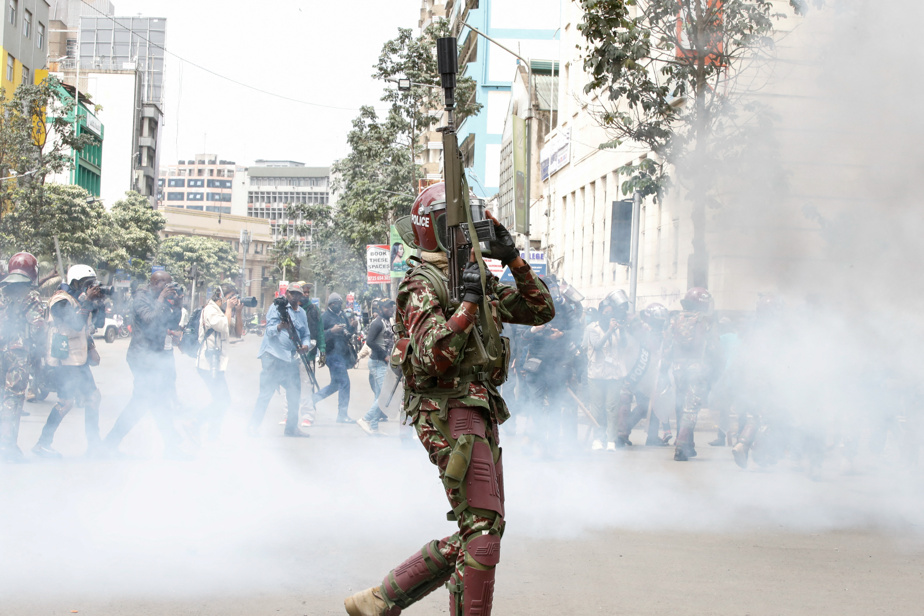(Nairobi) A few hundred people gathered in the Kenyan capital for a new sparse demonstration, the day after the withdrawal of the draft budget which brought young people into the streets and turned into a bloodbath on Tuesday, journalists noted of the AFP.
On Wednesday, President William Ruto gave in to the demands of young protesters and withdrew the unpopular draft budget which included numerous taxes.
Police, deployed in large numbers in downtown Nairobi, the epicentre of Tuesday’s violence, fired rubber bullets and tear gas at small groups of protesters who threw stones. At least seven people were arrested, AFP journalists said.
Police in riot gear also blocked access to roads leading to the presidential palace and Parliament on Thursday.
Demonstrations also took place in opposition strongholds of Mombasa (east) and Kisumu (west), bringing together several hundred people.
Tuesday, after the first two days of mobilization without major clashes to protest against new taxes planned by Mr. Ruto in his 2024-25 draft budget, first on bread then on fuel, the demonstration in Nairobi degenerated around of Parliament. Some buildings were burned and ransacked and the crowds were harshly repressed.
The police, according to several NGOs, fired live ammunition to contain the demonstrators who forced the security barriers to enter the National Assembly and Senate complex, an attack unprecedented in the history of independent Kenya since 1963.
These scenes of deadly violence have dissuaded some from taking to the streets again.
“It looks scary outside,” said Margaret, 26, who preferred to withhold her last name, adding that she would not leave her house despite having participated in the previous three days of action. “The military came out in large numbers,” she said.
The mobilization “is less than that of Tuesday because people fear for their lives. Ruto doesn’t care about people’s lives,” said Cephas, 24, a journalism student, who also did not give his last name and participated in previous rallies.
According to AFP journalists, most of the demonstrators present on Thursday were men.
Beyond the draft budget, the protest movement has transformed into a broader denunciation of the policies of William Ruto, elected in 2022 with the promise of promoting redistribution to the working classes.
On Wednesday, a figure in the protest movement, journalist and activist Hanifa Adan, called for demonstrations again on Thursday during a “peaceful” white march in memory of the victims.
A few hours later, William Ruto, who the day before had said he wanted to firmly repress “violence and anarchy”, finally announced the withdrawal of the draft budget, and said he wanted a national consultation with young people.
An announcement immediately described as a “communication operation” by Hanifa Adan, and greeted with suspicion by a number of demonstrators, like Lucky, 27, present in downtown Nairobi since 9 a.m. and who assures that he does not “trust Ruto”, convinced that “this law will pass one way or another”.
The spokesperson for UN Secretary General Antonio Guterres called on Wednesday for responsibilities to be “clearly” established after the deaths of the demonstrators.
The government justifies the new taxes by the weight of the debt: “How can we manage our debt situation together? asked William Ruto after capitulating on the draft budget. According to him, there is a lack of money in particular to finance programs for farmers and teachers.
Kenya’s public debt stands at around 10 trillion shillings (CAN 104 billion), or around 70% of GDP. The 2024-25 budget forecast 4,000 billion shillings (CAN 43 billion) in spending, a record.




